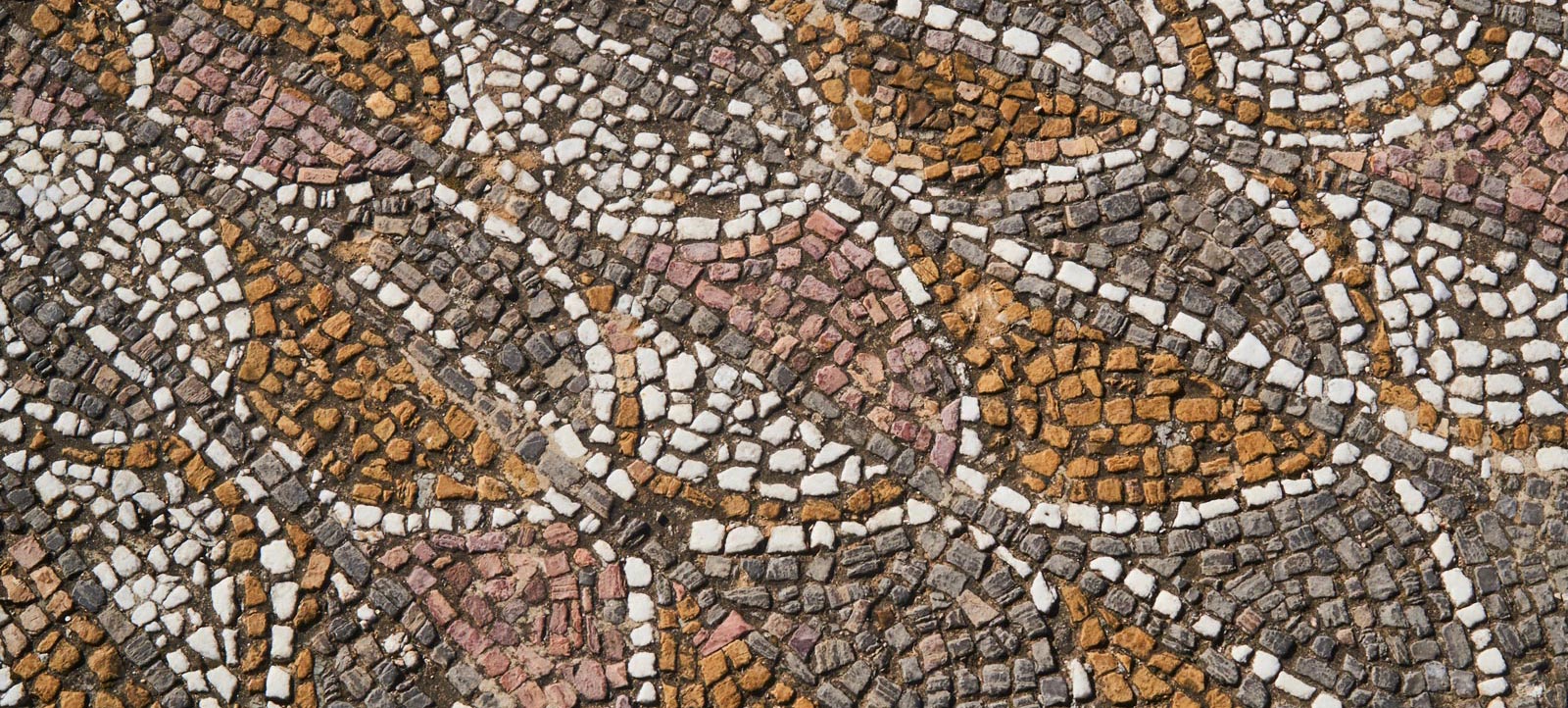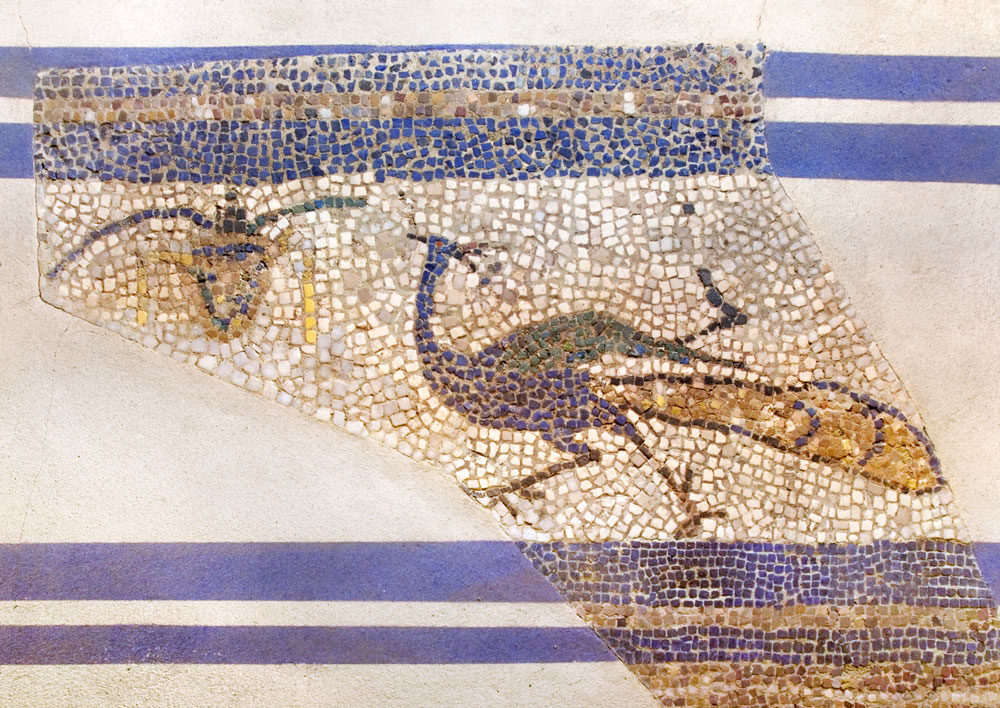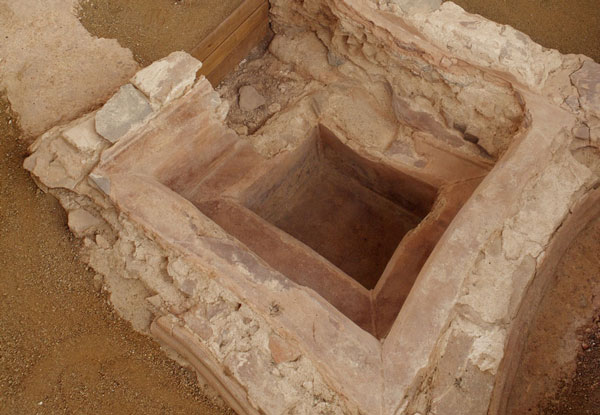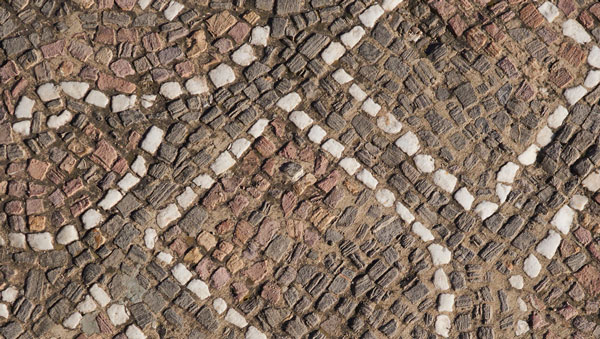


A first basilica was built in the second half of the 4th century. The church had a rectangular layout, a square chevet on the exterior and semicircular in the interior, along with lateral funereal chapels. At the foot of this basilica there was a funereal site to the west, with a central burial ground and other chambers. To the east of the basilica, meanwhile, behind the apse, there was the first baptismal structure with two tanks and a drainage channel where a hoard of thirty coins was uncovered, serving to establish a date of 363 A.D.


During the second phase of construction (first half of the 5th century), the church was paved with a mosaic of geometrical motifs. Along the southern wall we find Christian funeral motifs of bread and fishes, alongside a tombstone of marble slabs and tesserae dedicated to one Securus Cecilianus.
The baptismal area was also redesigned at this point: a quadrangular pool was built, bounded by a shrine comprising an octagonal structure of columns.